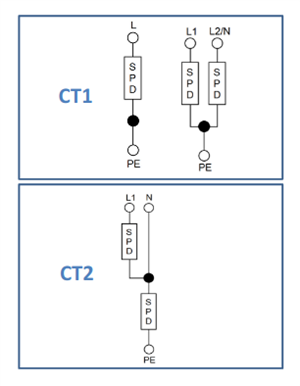The connection of SPDs using CT1 appears to provide protection only in common mode. That seems be the normal method employed. However, looking at CT2 am I correct in assuming that the clamp voltage would need to be very much less as the protection is provided across the conductors supplying load components? It seems to me that CT1 is for lightning and CT2 more for overvoltages derived from switching???

